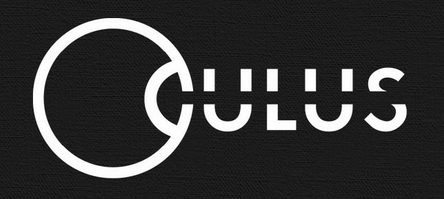 Right now the Oculus Rift project is at the center of my attention. If you haven’t read up on it, see here. In short, I’m hoping that this is the first major step in bringing virtual reality to mainstream gaming. With that in mind, I wanted to point out the first glimpse of specs for the Oculus Rift as well as an official site made by Palmer Luckey (aka PalmerTech) who is responsible for the project.
Right now the Oculus Rift project is at the center of my attention. If you haven’t read up on it, see here. In short, I’m hoping that this is the first major step in bringing virtual reality to mainstream gaming. With that in mind, I wanted to point out the first glimpse of specs for the Oculus Rift as well as an official site made by Palmer Luckey (aka PalmerTech) who is responsible for the project.
Luckey has launched an official Oculus site. It’s minimal but has some good info already. From what I understand, Oculus is the ‘company’ name while Rift is the particular HMD model that he is currently working on.
From the site we’ve got some early Oculus Rift specs:
- Horizontal FOV: ~90 degrees
- Vertical FOV: ~110 degrees (more than 5x the total image size than the HMZ-T1) [note that ‘size’ in this case refers to apparent size, not resolution]
- Input resolution of 1280×800, split between two eyes; Not as good as us gaming geeks want, sure, but that is more detail than you get by feeding an HMZ-T1 a SBS 3D image [effective resolution is 640*800 because of the split]
- Variable Acuity Resolution (VAR): Puts more pixels in the center of the image, and fewer in the periphery, mimicking the natural characteristics of the eye.
- Light weight: Sub-1lb/0.5kg, current prototypes weigh in at about 0.6lbs/0.27kg
- Low latency: Minimal processing delay for maximum head tracking realism
- Inputs: VGA, DVI, and HDMI for maximum compatibility
- Can be driven over an optional wireless video link with sub-1ms latency
- Open-source schematics allow anyone to freely modify, build on, and improve the design
- Sold as an all parts inclusive kit, assemble yourself!
- Price point of $500, as cheaply as it can possibly be while still providing a quality product
Luckey says that there is more to come on the specs front, we’ll keep you posted.
The site says that the Kickstarter will be happening in June, and I heard directly from Luckey that the Kickstarter is likely to happen no later than June 14th.
As for Oculus as a company, the site offers this “nutshell” description:
Oculus is a developer of virtual reality hardware for the enthusiast market. Other companies focus on research institutions, military contracts, and large companies as customers, but our mission is to put high performance, low cost, open-sourced virtual reality in the hands of homebrewers, experimenters, and gamers.
There’s also some good background on Luckey himself, including mention of a huge collection of HMDs totaling 43 units!
On a personal note, my name is Palmer Luckey. I have been going by the handle of “PalmerTech” for a few years now, and my hobbies include stereoscopic 3D, virtual reality, lasers, and portabilizing; I am lucky enough to work with the first two as a job! I am currently a lab technician and engineer at the USC Institute of Creative Technology, working primarily in the MxR (MiXed Reality) lab. I also do some freelance engineering and consulting work on the side, when time and interest permits.
Let me get this out of the way: I am a huge HMD nut. As far as I know, I have the largest private collection of unique HMDs in the world, totaling 43 units, not including the ones I have built myself. Part of this HMD obsession, as with any other obsession, is trying to convince other people to join in. And what a seductive dream, that technology can transport us into worlds we cannot hope to experience in real life, or augment our reality to shape it closer to our desires!
Unfortunately, virtual reality has risen and fallen many times, with a lot more emphasis on the latter portion. The tech has never gotten far enough to be truly convincing, and great VR hardware has been far out of reach for the average person… Until now.
Oculus is my tilt at trying to change that. The tech has improved, and we can build hardware and software that is better, stronger, and faster than the old guard, companies that create niche, wildly expensive products. Don’t get me wrong, these companies are important, and they have to solve some very tough engineering challenges to satisfy their customers. But the reality is that as gamers and dreamers, we have a different set of challenges to meet. Massive field of view to engulf your visual senses, low latency tracking to maximize presence, light weight and comfortable for long term use, and perhaps most importantly, prices measured in the hundreds of dollars, not tens of thousands. I have worked long and hard with a lot of brilliant people to try and meet those challenges, and now it is time to put it in your hands.
Why the name “Oculus? Because it is the Latin word for “eye”, and someone used the word in a meeting several months ago. I thought it was a nifty word, and was better than the alternative, “StepN2theGAME”.
There’s also a place to sign up for a newsletter on the Oculus site if you want to receive official communications from Luckey about the project.






Pingback: Virtual Insanity – Trying Out The Oculus Rift | Hummingbird Mentality()